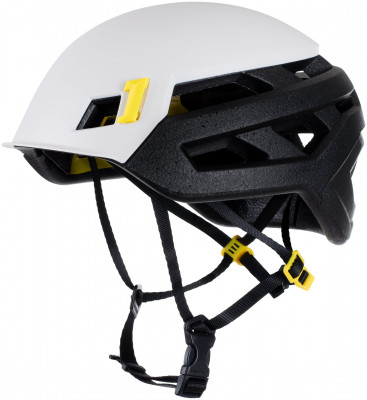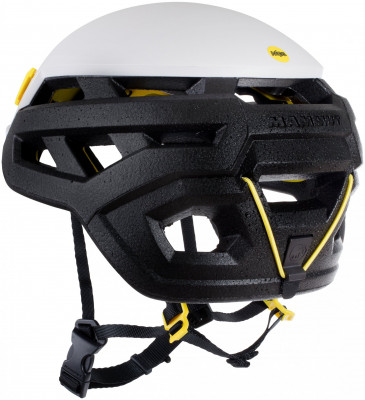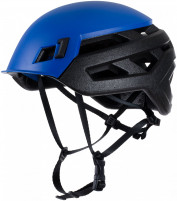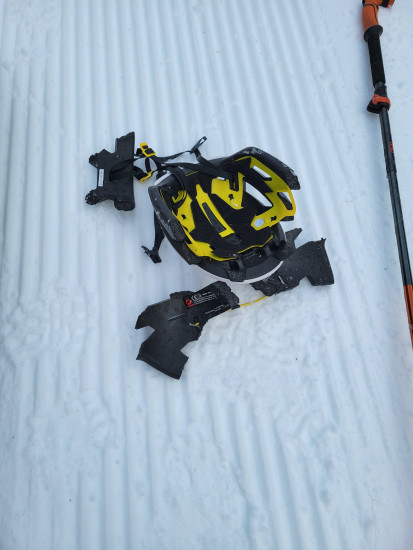Mammut Wall Rider MIPS Helmet
Ski mountaineering can be risky business. Most routes are comprised of some combination of cracks, dihedrals, chutes, couloirs, or steep-but-not-quite-vertical rock faces that inevitably hold potentially day-ruining hard chunks and blocks. Water is routinely melted and refrozen as the temperatures change from day to night and back again, and this cycle is notorious for encouraging hard things to take a gravity ride down the mountain. Lord help you if you encounter one of those falling pieces without a helmet. The Mammut Wall Rider MIPS uses cutting edge technology to weigh in under 250g while at the same time remaining fully impact certified. This MIPS technology creates a low-friction layer within the helmet and helps to disperse the forces from blows to the top of your head, therefore lowering the chance for serious injury when you do encounter falling debris. The Mammut Wall Rider MIPS helmet will keep your brain and head safe and sound whether you're adult-sledding or hunting for the steep and deep in the big mountains.
- A fully adjustable chin strap accommodates double, triple, but not quadruple chins (kidding, this chin strap can hold all the chin you've got, brother).
- A partial hard shell covers the top and front of the helmet, protecting the areas most likely to take a hit from falling debris.
- MIPS brain protection system reduces rotational forces on impact which can reduce the risk of brain damage.
- Two clips on the front and a bungee loop on the back keep your headlamp or goggles securely in place.
- Built-in slots and gaps provide ventilation when you're moving fast and don't have time to take a rest.
- Sizing S/M 52-57cm L/XL 56- 61cm
- EN 12492 certified.
| Specifications | |
|
Weight |
222g [S/M] |
| Certifications | EN 12492 (climbing) |
| Specs Verified | Yes |
| Design | |
|
|
Cushioning EPP (Expanded Polypropylene) core with a partial hard shell |
| Skimo Co Says | |
| Usage | Ski mountaineering, climbing |
| Notes | MIPS reduces chance of brain damage |
| Bottom Line | Cutting edge safety in a lightweight helmet |
| Compare to other Mountaineering Helmets | |
Related Products
Questions & Reviews
Things I like: super lightweight and well ventilated for spring tours and fitness laps. It's not quite as cool as a trucker hat but I often prefer to just wear it instead of a hat so I don't have to carry a separate helmet. Can adjust to fit a buff or hat underneath very easily.
Only thing I kind of wish could be better is the chin strap tends to easily get looser, so I have to tighten it often.
The EN climbing certification is primarily concerned with impacts on the top of the head. Think rockfall. In contrast, the EN skiing certification is also concerned with lateral impacts, as that is a common mechanism of injury in skiing accidents. If you really want to get into the weeds, I would recommend reading about the testing directly on the certifying body's web page.
CEN should have all the details on the climbing specific certification (EN12492), as well as the skiing certification (EN1077).
For a quick summary, Weigh My Rack has a pretty awesome article at this link:
https://blog.weighmyrack.com/understanding-climbing-helmet-certification/
The Wall Rider does have some additional padding to protect from lateral impacts, but if it is not certified, it will not protect as much as something like the Scott Couloir Mountain.
Would keep in mind that given the light weight foam, the side to side rigidity here is quite poor like other climbing helmets. So, for full pack ski traverses - just keep in mind you can't put a body weights worth of a push to stuff your bag closed without the chance of cracking this if its on its side somehow. I somehow managed to snap the rear clasp closure off (not big deal) while doing this.
The headlamp compatibility could be a bit better, given the buckles are integrated into the strap system it can be a pain to pop them out to get the lamp strap below them.
Thanks
Earn store credit by writing reviews. Learn more.

















